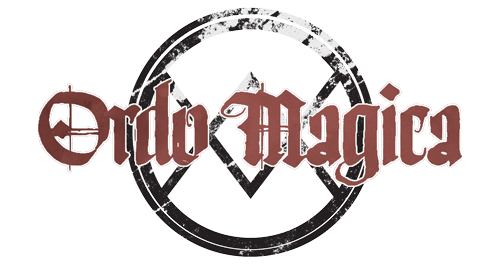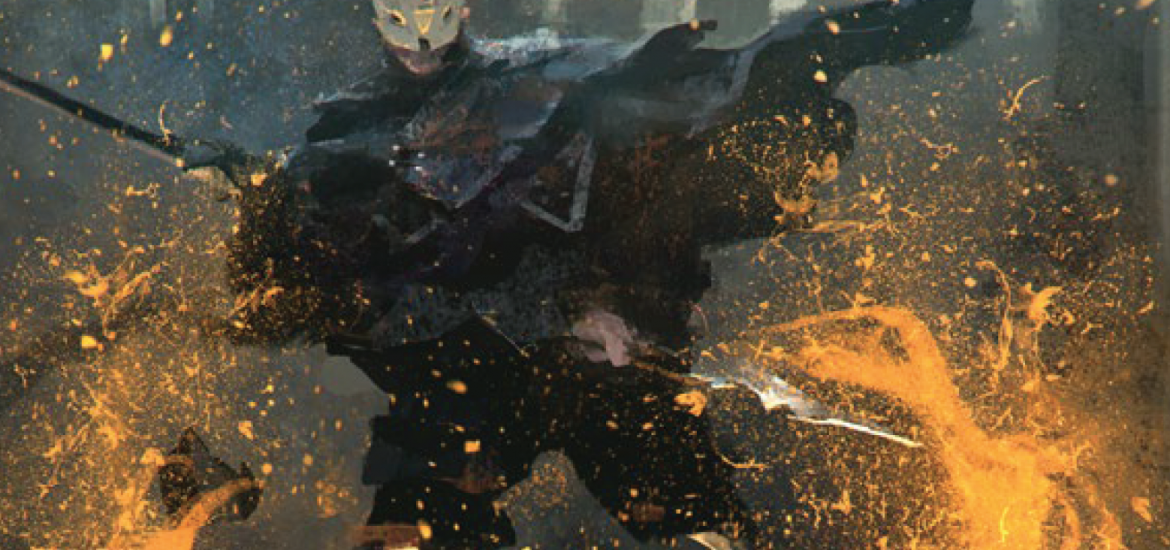Back when I wrote my guide to dealing with overpowered player characters, I had originally planned to get around to writing a separate post about managing the third overpowered archetype: the Controller. I touched on some of it in the article on keeping bad guys alive – but a few topics recently came up that made me feel like this might deserve its own article anyway.
The Controller
There are a lot of ways to construct mystics in Symbaroum. There is arguably more variety in the mystical professions than there are among warriors, rogues, and hunters. There are four main schools of magic (not counting staff magic, symbolism, and troll-singing) and each of those has such a wealth of powers that you can make three practitioners of the same mystical tradition and they might not have a single power in common. And some of these skill trees are more problematic than others.
A Pyromancer, or a Blood-Wader, or a Templar are for the most part going to fall within the Tank and Slayer categories for purposes of challenging and reinforcing player choices. They mainly focus on dealing and reducing large amounts of mundane damage.
However, powers like Bend Will, Entangling Vines, Confusion, Maltransformation, Blinding Symbol, Banishing Seal, and Black Bolt can shift the balance of combat so radically that they can potentially end fights in a single turn if you are not prepared to counter them. Most of those powers use opposed Resolute rolls, and on higher levels most of them are chained effects, so if the players are up against large groups of enemies with low Resolute it’s to be expected that these mystics will take a significant number of opponents out of the combat with a single power.
Reinforcing the Controller
Single-handedly turning the tide of battle is fun! That’s why the players picked those powers! When you know that you have a powerful controller mystic at the table, you can put a large number of extra bodies on the enemy side because you can expect that the mystic is going to wrap them in vines or cloud their minds or strike fear into them with banishing symbols.
A wizard with 15 Resolute, Exceptionally Resolute I, and a Ruler’s Ring (APG minor artefact) will have an effective Resolute of 17 when casting Confusion. If you put them up against a wave of barbarians with Resolute 9, the wizard will be rolling against 18. That’s a 90% chance to succeed. They’d have about 53% chance to Confuse six barbarians in a chain, or 47% to confuse seven. That means that the mystic can reliably take out a whole encounter by themselves.
I can hear you freaking out already, but just think how cool that’d be as a player! Put some effort into describing the effect, the nightmarish visions visited upon the unsuspecting barbarians, the shattering of their fragile psyches, the chaos that erupts as a flank of the barbarian army turns on itself in confusion. Establishing a tradition of de-escalating combat also makes these crowd control powers serve a totally different purpose – it could be a main method for the group to turn a would-be deadly combat into a negotiation situation or a scene to extract information from their captives.
As soon as you know to expect this type of play from certain members of your group, you can also prepare to counter it.
Challenging the Controller
There are two main avenues to countering the Controller – improved resistance, and disruption. The easiest path to improved resistance is of course to field enemies with higher Resolute who won’t fold as easily and can serve to stop chain effects. Abilities like Steadfast and Leader can also give mystics a surprise.
Disruption usually relies on having opposing mystics and ranged attackers on the field who can cast Anathema on their allies or deal targeted damage to the player mystics. Remember that ongoing effects require Resolute tests for every target affected, and that whenever the mystic takes damage they must make a Concentration test (Resolute minus damage).
Anathema
The game’s foremost counterspell is of course the first card in your arsenal when it comes to making life difficult for your player mystics. It’s cast on a per-target basis so it might be difficult to release a whole wave of confused allies – but on the highest level it is cast as a chain. It’s also not an opposed test, so it’s up to you how you want to manage it, but it should mean that the NPC mystic has a good chance to release a lot of his allies from the effect.
Larvae Boil
This and similar direct-damage powers are good options for disrupting player mystics, but Larvae boil is especially potent because it is guaranteed to deal damage at the start of the afflicted players’ turn. Thus it will force them to make a concentration check which might release everyone controlled by their power.
Leader
This is one of the game’s most overlooked combo powers. At the Novice level it can make a lieutenant-style character with decent Persuasive but low Resolute significantly buff his magic resistance by allowing them to use their charisma instead of their willpower when resisting the player’s attempt. At the Master level, it can let a major-league leader character lend their Persuasive to all their allies to use instead of Resolute.
This can let you field standard enemies against your players that your mystic is used to controlling easily, but when they’re up against those same minions alongside their boss they are suddenly much more difficult to confuse or control.
Steadfast
On Adept level, this ability allows a character to re-roll resistance rolls that attempt to affect their senses or will. On an NPC this would force a player to roll twice and pick the worse result. On Master level, a failed roll on the player’s part will inflict 1d6 retaliatory damage – which will threaten the mystic’s concentration, which might cause the whole chain to break.
Artefacts and Mystical Items
My recent article about spell seals and ritual scrolls originally started as a list of ideas for giving NPCs some inherent but limited-use resistance against powers like these. Spell seals with Anathema or Larvae Boil set to trigger when the character fails a Resolute test could be powerful tools to mess up a player mystic’s day.
Similarly, you could give important NPCs artefacts that have powers similar to Steadfast on Master level, or something like Leader but using any attribute you want. Maybe a witch-seer has a staff with an all-seeing eye that allows them to see through harmful mystical energies and therefore uses Vigilant or Cunning to resist mystical powers?
As I suggested in the bad guys post, if you make your baddies undead or abominations you can also get away with giving them artefacts with abilities that have amazing powers (like immediately retaliate against anyone that tries to control your mind) but inflict permanent corruption upon use (which undead and abominable mystics wouldn’t care about).
Fudging with Waves
Again a suggestion I put forward in previous posts, but just keeping a few extra enemies – preferably ones with some tricks up their sleeves – can let you react to a fight in an agile manner. If a fight seems to be heading towards a boring premature conclusion, just throw in another wave of opponents.
If the players seem especially cocky or bored, just ask someone to roll Vigilant to spot the assassin that has used the first wave of attackers as a distraction to come up behind the mystic to garrotte them or stab them in the back with a poison blade. Even if they deal with the attacker, a ticking damage of poison and/or bleeding will force a mystic to roll concentration every turn.

